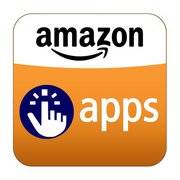Amazon has yet to turn on any services on the back of a deal it signed with carrier billing specialist Bango over a year ago, but it looks like we may finally see the first fruits come out later this year, according to a source, with the launch of carrier billing in Amazon’s Appstore for Android. This points to a more aggressive push from the tech giant not only on services, but also devices — which today cover tablets but may also include phones in the near future.
In a statement issued yesterday detailing its not-brilliant earnings for the last nine months (revenues $11.2m; net loss $3m), Bango notes that the results “do not include any material income from the agreements signed with Amazon.” Looking at the future outlook, Bango remains positive on the progress of its relationship with Amazon, describing “continued adoption of its technology by industry players with partners such as Facebook and Amazon” in the months ahead. Meanwhile, a note in Bango’s annual report, also issued yesterday, notes that the company has completed its integration with Amazon, adding it to a roster that already included app storefronts run by Facebook, Google, BlackBerry, Microsoft and Opera — “most of the leading app stores,” the obvious missing piece being Apple’s App Store.
We reached out to Bango for more clarification; a company spokesperson declined to comment. We also have questions out to Amazon. Meanwhile, a source close to the matter tells TechCrunch that, in fact, both parties are finally preparing for “this service to go live this year.”
Amazon’s Appstore is pre-installed and the default apps storefront on its Kindle Fire tablets, but users of other Android devices can also buy from the store by sideloading, or by installing the Appstore app on their non-Amazon handsets or tablets. The Bango service is “directly for Amazon itself,” notes the source, and not for any third parties that work with the platform.
Although it would certainly be a help to Bango’s business to have another app store using its payments platform, adding in another payment option for Amazon’s mobile content could point to several developments for the bigger company, too.
The most obvious one is that it would add carrier billing to Amazon’s existing Kindle Fire tablet business. Today, this would have a limited scope: it appears that it is only in the U.S. that Amazon has a direct connectivity deal with a carrier. There, it sells its 8.9-inch Kindle Fire HD with 4G LTE data connectivity provided by AT&T. An announcement last week that Amazon would begin selling the 8.9-inch Kindle Fire HD in Europe and Japan did not say whether any of those launches would include LTE services. This could be one signal that Amazon is gearing up to turn on the LTE hose elsewhere.
A second option, related to the first, is that this could be used by Amazon to further extend where and how it markets its digital content business (apps, books, games, video, music) in other markets outside of the U.S.
Last year saw Amazon launch a Kindle store in Brazil. Emerging markets like Latin America that have become a big target for carrier billing services, because of the low penetration of payment cards — credit and debit — among consumers. (It’s an area that Bango specifically raised $10.2 million to better target this year, and it’s one that its other partners, such as Telefonica and Mozilla, will also be targeting with carrier billing services for content.)
Combining this with the fact that the Appstore can be used on Android devices other than the Kindle Fire, offering a route for consumers in these places to buy apps, music, video and books by charging the purchases to their operators will give Amazon a window to significantly more digital content revenues internationally. That portfolio of offerings may itself be growing, with recent reports of a subscription music service, fuelling the need for quicker and easier ways to pay for that content.
A third option is that Amazon may really be gearing up for another kind of device, a handset. An Amazon phone ranks up there with the much-fabled Facebook phone as something that people have been hoping/expecting to see for a while.
But just as there appear to be more smoke signals (actually, let’s call that smoke Myst) around Facebook’s plans, so too is the Amazon handset getting some recent buzz. In February, there were reports that Amazon has put in an order for some 5 million handsets with Foxconn, with the handsets shipping either in Q2 or Q3 this year and priced at between $100 and $200. Some have even started to flesh out that rumor with device specs based on what components are cheap and readily available.
Amazon has been readying other services that it could leverage on a larger portfolio of devices. One of the biggest is its own mobile ad network. As BI points out, these ads will appear in any apps that have been downloaded from Amazon’s Appstore, on any Android device, but creating its own handset will give Amazon potentially a much bigger, guaranteed volume of devices that would help that network scale out.
Going back to Bango and carrier billing, it would be on a handset, too, that a carrier billing service would work most effectively and most obviously. While Amazon’s tablets mostly today do not connect with carriers, mobile phones certainly will.
